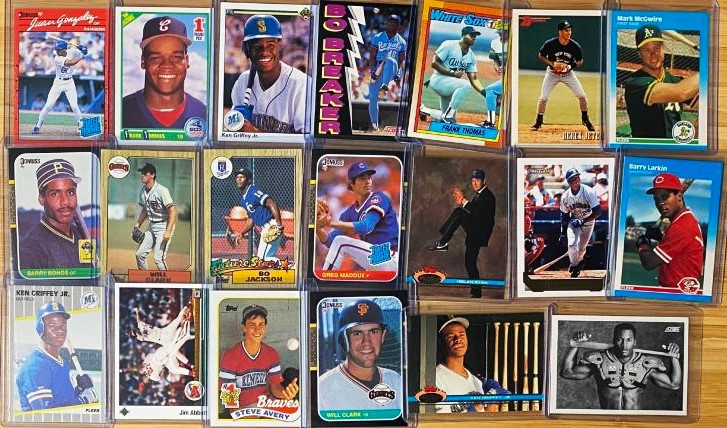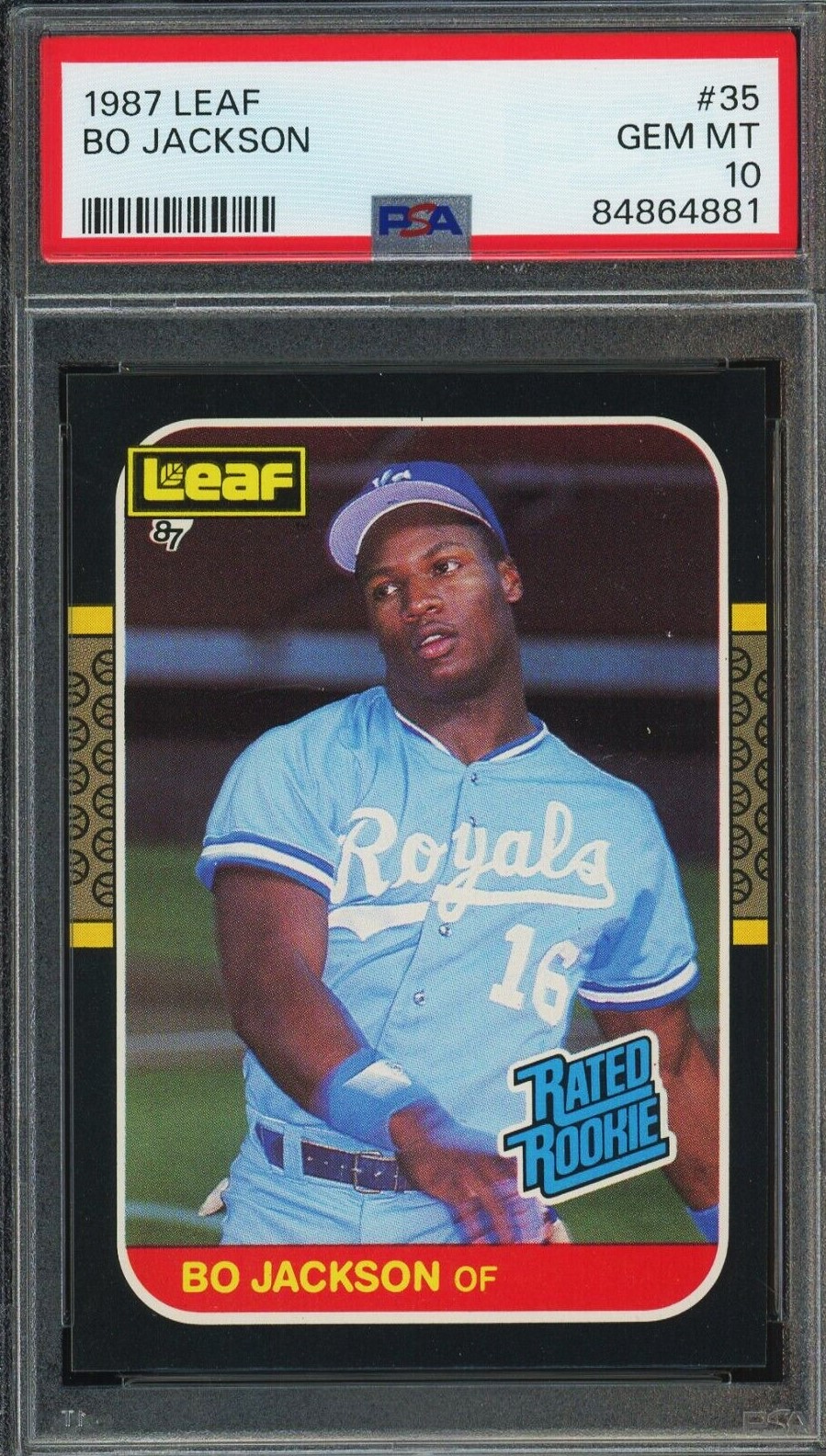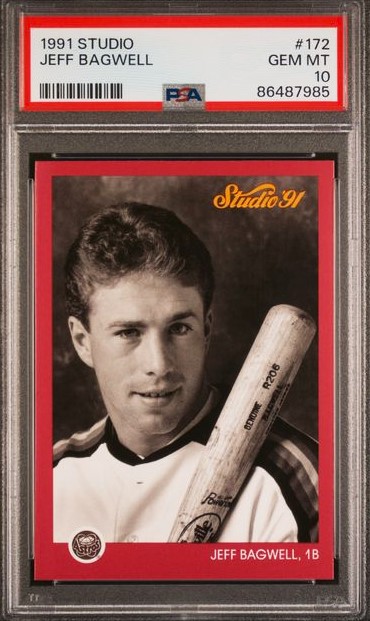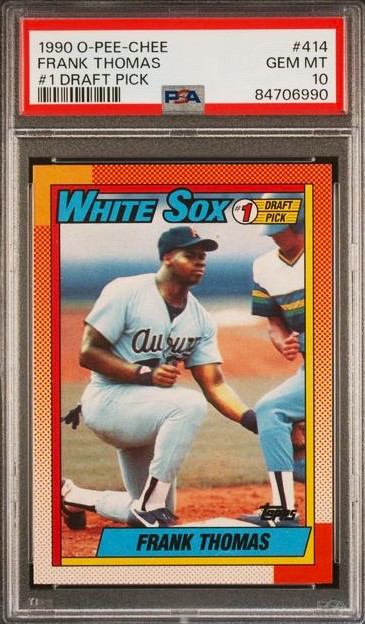The junk wax era of baseball cards, roughly spanning from the late 1980s through the early 1990s, often elicits mixed emotions from collectors. During this period, card companies ruthlessly overproduced sets to meet an insatiable market demand that unfortunately fizzled out as the decade closed. This period earned its infamous moniker from the low resale values and massive supplies that mirrored excess stocks or “junk.” Yet, despite the era’s notorious reputation, it remains an intriguing chapter in the archives of sports memorabilia, marked by both nostalgia and cautionary hidden tales.
While generally deemed as the least lucrative segment in vintage card collecting due to the overwhelming print runs, the junk wax era is not without its hidden outliers. Beneath piles of common cards that are more abundant than sand at a beach, lie a few underrated treasures that maintain rarity and garner unexpected value. These elusive cards, often characterized by their low population grades or unique error prints, narratively reshape an otherwise disparaged epoch in card collecting, offering a silver lining to an era too often defined by its excesses.
What does “Pop” mean in the Sports Card World?
In the world of sports cards, the term “POP” or population refers to a figure that is much more than a simple numerical value; it’s a pivotal indicator of a card’s rarity and potential investment value. Contrary to common belief, the appeal of a card doesn’t solely reside in its age or the player it depicts, but significantly in its POP count. A low POP count means fewer cards of a certain grade are in existence, sharpening its uniqueness and often driving up its desirability among collectors. This rarity factor makes POP crucial — it’s not just data, but a beacon that guides the savvy collector in a sea of seemingly identical cards. Essentially, when we talk about POP in sports cards, we’re discussing the heart of what makes collecting thrilling — the pursuit of those elusive, low-population gems that promise not only nostalgic joy but potentially lucrative rewards.
Icons of the Diamond: Legendary Players of the Junk Wax Era
The baseball junk wax era, although overshadowed by its production excesses, was home to a roster of players who etched their names into the archives of the sport with spectacular performances. Among these, stars like Ken Griffey Jr. stand out; his charismatic swing and magnetic charm made his rookie cards iconic, despite the high print runs. Barry Bonds, another prodigy of this era, shattered home run records, creating a relentless pursuit for his cards even amidst the era’s glut. The unsinkable Randy Johnson and the indomitable Cal Ripken Jr. also dominated this period, displaying longevity and record-breaking streaks that kept fans and collectors hooked. These players didn’t just perform; they inspired a generation, making their cards sought-after relics of a bygone but cherished epoch in baseball history. But these players couldn’t have any low “pop” sports cards right? Wrong, in fact, some the lowest pop iconic rookie cards are in the junk wax era. Let’s dive in to these amazing low pop rookies you need to check your closet for:
Ken Griffey Jr.’s 1987 Bellingham minor league rookie card #15 is a rare but fabled relic in the sports card community and marks the first sports card in his illustrious career of one of baseball’s most beloved figures. Released before he became a household name, this card captures a young Griffey in his Bellingham Mariners uniform, showcasing the raw talent and potential that would soon captivate Major League Baseball. The sincerity of his youthful gaze, paired with a hint of the iconic Griffey smile, offers a nostalgic flashback to the origins of a superstar who would later be synonymous with the Seattle Mariners and home run glory.
Despite the excess production pitfalls of its era, this particular rookie card differentiates itself with its relative scarcity and significant historical value. As Griffey soared in prominence, so did the demand for his earliest depictions on cardboard. For hardcore collectors and fans, owning the 1987 Bellingham minor league card is not just about having a rare piece of memorabilia; it’s about holding a snapshot of a legend’s humble beginnings. This card was apart of a Mariners team set that only produced a total of 15,000 copies. With only 15k copies you can imagine how many got destroyed, thrown away etc. At once first bluff, you may think 15,000 cards is a lot, and it is, but let’s take a deeper look. The great 89 Upper Deck Ken Griffey Jr. #1 has more PSA 10s than this card has in total grading, 30,000 copies in a PSA 9 even, that’s a lot of cards! As great as the 89 UD Griffey rookie is, its far and away an abundant junk wax era card. Let’s take a look below at the POP Report for “The Kids” first minor league rookie card in PSA form:
1987 Bellingham Mariners Team Issue Ken Griffey Jr. #15 PSA Pop Report:


As you can see by the PSA pop report there are only 3,390 cards in total circulation. Only 805 of which are PSA 10s, for Ken Griffey Jr, the kid, the icon of the 90s first sports rookie card, that’s a low volume you can get behind for the long-term. These rare cards embody not just the essence of a beloved athlete’s first card, but they also present a robust investment potential due to their scarcity. As the sports collectibles market continues to expand, the value of such distinctive and low pop cards will only appreciate, making them a significant financial asset. One of these lone 800 pop first Jr. rookie cards in PSA 10 form can currently be had for about $595. In pop consideration, that is an absolute steal for such an iconic baseball player in the Top 30 players of All-Time.
Moreover, owning such a piece elevates your collection, setting it apart in the realm of sports memorabilia. Investing in a low pop junk wax era card means investing in exclusivity and historical significance, ensuring that your collection not only retains but grows in monetary and sentimental value, solidifying your status as a discerning and astute collector. Don’t pass this Jr. card up friends, once people catch on to its scarcity over time its almost a certainty to appreciate in value!
The 1987 Leaf Bo Jackson Rated Rookie may very well be his lowest pop baseball rookie available. It is nothing short of a cornerstone piece in any serious baseball card collection, proudly standing as a testament to the sheer magnetic appeal and raw ability of one of the greatest two-sport athletes of all time. This card captures Bo Jackson at the dawn of his professional sports career, exuding a kind of raw, untamed promise that Jackson himself delivered on the football field and baseball diamond. Its scarcity, due to the lower distribution of Leaf products compared to their Donruss counterparts, significantly propels its collectivity, transforming it from a mere collectible into a storied artifact that encapsulates Jackson’s athletic prowess and the era’s card market idiosyncrasies.
Moreover, the 1987 Leaf Bo Jackson Rated Rookie isn’t just a card—it’s a cultural symbol, a flashpoint in the cross-section of sports fandom and memorabilia investment. Only 829 PSA examples of this card exist, even crazier is only 104 of them are Gem Mint 10s. This type of population will undoubtedly ensure that it continually appreciates in value, making it the Bo Jackson rookie of choice for collectors looking to combine passion with savvy investment.
A little background on the 1987 Leaf and 1987 Donruss baseball card sets, though seemingly similar at first glance, catered to distinctly different segments of the collector market, primarily distinguished by their geographic distribution. The 1987 Donruss set, widely distributed across the United States in bulk, became immensely popular, featuring a comprehensive assortment of players that resonated with a broad audience of American collectors. In contrast, the 1987 Leaf set was marketed primarily in Canada, leading to a much smaller print run and consequently a much, much lower circulation. This limited distribution significantly impacts the rarity and desirability of the Leaf cards among collectors today. Additionally, the branding and bilingual card descriptions in English and French on the Leaf cards catered specifically to the Canadian demographic, further distinguishing it from its Donruss counterpart. Both sets featured similar designs and player rosters, but the scarcity of the Leaf issues due to limited geographic availability makes them particularly coveted in the sports card collecting community.
Let’s dive into the PSA pop report on this Bo Jackson Leaf card, and we’ll compare it to the 87 Donruss counterpart:
1987 Leaf Bo Jackson #35 PSA Pop Report:

1987 Donruss Bo Jackson #35 PSA Pop Report:

In comparison, you can see there is quite a difference in availability. Outside of the naked eye, you may take the Leaf cards out to be a Donruss so be sure to double check your collection, the top left logo is the only differences between the two on the front side. The back side you will see some brief updated French writing that can be easily missed.
Takin with the population reports above, the 87 Donruss Bo Jackson PSA 10 will cost you around $180-$200 at auction. The Leaf counterpart in a PSA 10 will cost you a plentiful $1800-$2000. Which begs the question, do I need to check those closet boxes one more time for these rare Canadian Leaf gold mines. Whether you are a Bo Jackson Baseball fan or a Bo Jackson football fan, these low pop rated rookie Bo Jackson’s beg consideration for long term ascending values.
Now, I know what are you thinking.. There’s no way this 1991 Studio card of Jeff Bagwell is a low pop, we’ve seen this junk wax everywhere.. But have we? Let’s dive in.
The 1991 Studio Jeff Bagwell rookie card, known for its distinctive, artistic photography and minimalist design, set themselves apart from the typical action-shot baseball cards of that era, offering a more intimate, portrait-like depiction of players. Jeff Bagwell’s rookie iteration in this series is particularly notable not just for its aesthetic appeal, but also for its low population status in any grade. Most have probably seen this card while scrolling through their junk wax and said hey, just another junk wax card, and continued on. I mean, if you look at it nothing stands out right, no rookie emblem anywhere, nothing at all obvious of a rookie card that says I sell for $600-700 in Gem Mint 10 form. That’s, right, the last sale of this card on 4/17/2024 in PSA Gem mint 10 form was for a whopping $700. This is due to the incredible low population of this card. Let’s dive in to the data:
1991 Studio Jeff Bagwell PSA Pop Report:

As you can see by the PSA data above, this card has only 462 cards graded, that’s insane! Only 28 of which are PSA 10s, making this card one of the premier Jeff Bagwell rookie cards to own. Not only that, rip those closet junk wax boxes open to see if you have a good condition example of this card. If you do, you may want to consider getting it graded.
Jeff Bagwell stands as a quintessential example of baseball excellence and resilience, making his memorabilia, such as this low pop Studio rookie card, a prized possession for any collector. Bagwell’s illustrious career with the Houston Astros, marked by a Rookie of the Year award, an MVP title, and consistent elite performance, underscores his significance in baseball history. His seamless blend of power and precision at the plate led him to produce some of the most impressive statistics of the 1990s.
Beyond the figures, Bagwell’s distinctive batting stance and work ethic made him a fan favorite and a symbol of dedication and passion. Investing in Jeff Bagwell’s low pop rookie cards and memorabilia is not just a tribute to a phenomenal athlete, but a stake in the legacy of a player who epitomized the spirit of baseball through every swing. Bagwell’s induction into the Baseball Hall of Fame in 2017 further cements his status as a legendary figure whose memorabilia and rare rookie cards like these are sure to appreciate with time and legacy solitude.
Wait, that card says Topps, but I’m confused the PSA slab says O-Pee-Chee. That’s exactly right, arguably the most unknown O-Pee-Chee sets in existence.
Distinguishing between a 1990 Topps baseball card and its 1990 O-Pee-Chee counterpart can pose an insane challenge to even seasoned collectors, due primarily to their highly similar design and appearance. Both sets feature the same player images and overall layout on the front of the card, leading to easy confusion and junk wax thoughts at first glance. The primary method of differentiation lies in the fine print on the card backs.
O-Pee-Chee cards, targeted towards the Canadian market, typically include bilingual text in English and French, and contain the smallest O-Pee-Chee logo in an almost unreadable spot by the bottom border portion of the card contrasting with the Topps emblem found on American issues. Additionally, the card stock and print quality slightly differ but you would never be able to tell with the amount of junk wax print discolorations. O-Pee-Chee cards often exhibit a somewhat glossier finish and a different shade of card back, which is only detectable upon close side by side inspection. Now that you’ve seen this, do you have some 1990 Frank Thomas rookies to inspect, I know I do. Let’s dive into the low population O-Pee-Chee version of this incredible wax era Frank Thomas card, and we’ll also look at the population for the base Topps versions:
1990 O-Pee-Chee Frank Thomas PSA Pop Report:



Now, we included the no name on front data as well for visual and clarity, almost everyone knows about this special error card being one of the most sought after error cards of the 90s. However, as you can see from the PSA pop report, many do not know about the rarity of the O-Pee-Chee versions. They’re not as low pop per se as the no name Frank Thomas error card, but they are strikingly closer than you would think. Both, heavily out populated by the junk wax that is of the name on front Frank Thomas rookie card.
Let’s not get it twisted, this Frank Thomas card was childhood dreams for many of us growing up, even the mass produced version, so while it has been massively over produced, the cards history is impeccable to collectors. With knowing that, how absolutely stunning are those population numbers for the 1990 O-Pee-Chee Frank Thomas version. Again, keep those junk wax closet boxes open because you’re definitely going to want to check over those Frank Thomas 1st draft pick cards that have been sitting with dust for the last 10 years. Last sale for one of these low pop O-Pee-Chee versions in PSA 10 form took in a radiant $670 in March of 2024. With many collectors not knowing the slim population on these cards, the future and value asset price for these low pop Frank Thomas cards are sure to catapult.
We all remember these big dumb cards that always got in the way of closing boxes right! Well 1 of them is incredibly rare and that is the Randy Johnson Rookie #287. This card came in the series 3 versions of these packs as well as in some of the 89 Topps boxes as variation stuffers. Known as cool junk wax cards with comical artwork on the back, most of these made there way to the bike wheel clips due to their massive size.
These 1989 Topps Big Baseball cards represent an intriguing chapter in the history of baseball memorabilia. Released as an ambitious experiment, this set broke away from the traditional card format, featuring a larger 2-5/8″ by 3-3/4” size that drew immediate attention from collectors. The design, nostalgic yet bold, brings back the whimsy of earlier eras, showcasing playful and vivid artwork alongside the portraits. However, what really sets these cards apart is their forthright embrace of a more casual and accessible approach. The cards borrow their style from the 1956 Topps set but reinterpret it in a way that appeals to the playful side of card collecting, bringing the fun back into a hobby that, even by the late 80s, was beginning to take itself a bit too seriously.
Amidst the playful and oversized collection of the 1989 Topps Big Baseball cards, the Randy Johnson #287 rookie card stands out as a must-have for serious collectors due to the rare concentration of availability. In a set that was generally overlooked by high-end investors, Johnson’s rookie card emerges as a notable exception, capturing the towering pitcher in the nascent stages of what would evolve into a Hall of Fame career. This card not only appeals due to its portrayal of a young rookie Randy Johnson but also because it has emerged as one of the rarer pieces in the Topps Big series. Its rarity and the stature of Johnson’s career add a level of desirability that transcends the usual market trends of this playful set.
Moreover, while many of the cards in the 1989 Topps Big Baseball lineup are criticized for their abundant production and resultant low market value, the Randy Johnson #287 rookie card has carved out its own niche of value and collector interest due to the absolute pop results for high grade variations. Let’s dive into the data on this rare jumbo card:
1989 Topps Big Baseball Randy Johnson #187 PSA Pop Report:

Only 322 of these Jumbo Big Baseball Randy Johnson rookie cards have been graded as shown above. Perhaps that’s due to so many of these being oversized and getting damaged easily one can only assume. However, the case remains, you definitely need to check your oversized junk wax baseball cards to see if there is a clean example of the great Hall of Famer in rookie form.
Randy Johnsons Illustrious Career
Randy Johnson’s baseball career epitomizes dominance and longevity, solidifying his place as one of the most formidable pitchers in Major League Baseball history. Towering at 6 feet 10 inches, “The Big Unit” wielded his left arm like a cannon, unleashing fastballs that routinely approached or exceeded 100 mph, coupled with a devastating slider that terrorized hitters for over two decades. From his MLB debut in 1988 until his retirement in 2009, Johnson amassed an impressive 303 wins and struck out 4,875 batters, the second-highest total in MLB history. His accolades include five Cy Young Awards, ten All-Star selections, and a no-hitter that culminated in a perfect game in 2004 at the age of 40. Johnson’s sheer presence on the mound, characterized by an intense competitive spirit and a fiery demeanor, along with his remarkable statistics, leaves an indelible mark on the sport, making him a true icon of the game and a first-ballot Hall of Fame inductee in 2015.
With rare low population rookie cards of these type of hall of fame players, its a surprise more of these cards have not been found and graded. Last PSA 10 example of this card at auction took in a bewitching $1,010 in March 2024. With only 30 PSA 10s in the population, the hunt for these cards in clean examples should be at the top of Junk Wax treasure hunting initiatives.
In Conclusion
In the world of sports cards, rarity and historical significance often march hand in hand to establish the desirability and value of a collectible. Among the standout cards revered by collectors are the 1987 Bellingham Ken Griffey Jr., a minor league card that captures the youthful promise of one of baseball’s most beloved figures, and the 1987 Leaf Bo Jackson, which showcases the dual-sport star in his early baseball days, reflecting his larger-than-life athletic narrative. The 1991 Studio Jeff Bagwell card is equally notable, offering collectors a glimpse of the slugger before he became a mainstay in the Gotham of baseball greats. Similarly, the 1990 O-Pee-Chee Frank Thomas represents the Big Hurt in his rookie gear, a card cherished not only for its scarcity due to limited circulation outside or inside of the U.S. but also for the storied career that would follow.
Complementing these cards is the 1989 Topps Big Baseball Randy Johnson rookie card, distinguished not only by its oversized format but by being part of a quirky set that has flown under the radar for many mainstream collectors. The value these cards may represent in the future stretches beyond mere monetary assessment; they are cultural artifacts preserving the early stages and raw potential of athletes who would go on to redefine their sport. The rarity of these cards enhances their appeal, making each a coveted piece for those looking to own a tangible slice of baseball history. Collectors and enthusiasts treasure these cards, but many of us like myself, are now aware of the low desirable populations and can perhaps turn some closet junk wax carboard into a fulfilled low pop fortune.
Rookie Sports Card is reader-supported. When you buy through the links outside of our website, we may earn an affiliate commission from Ebay and Amazon.
Article Credits: (Fagan, Sportingnews.com)
As always, thank you for your support!











